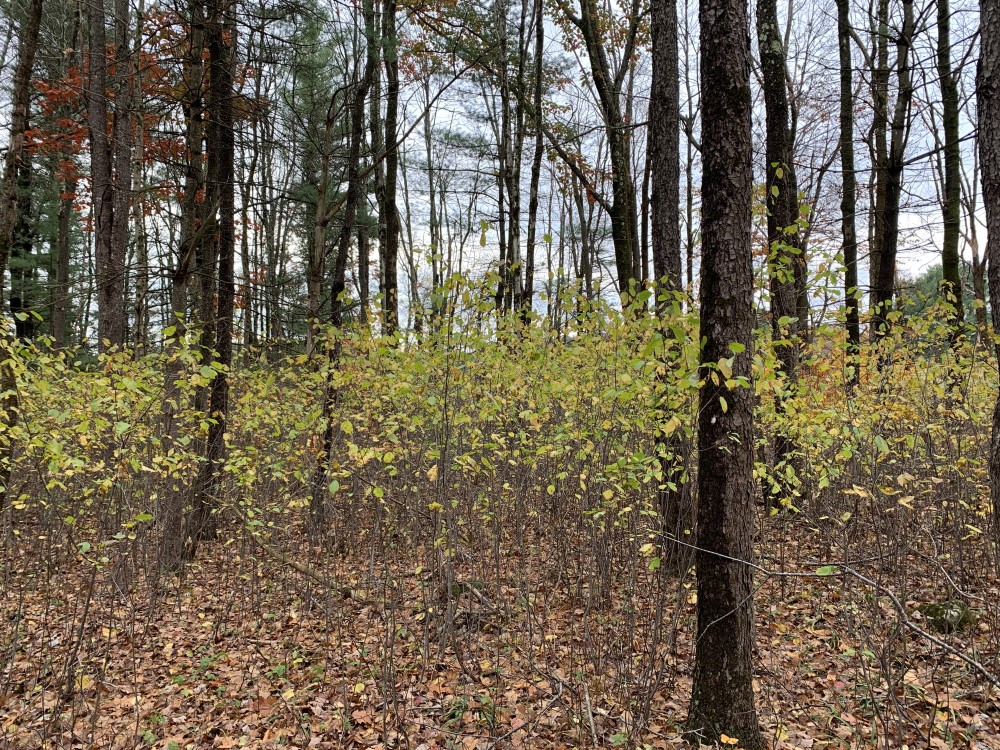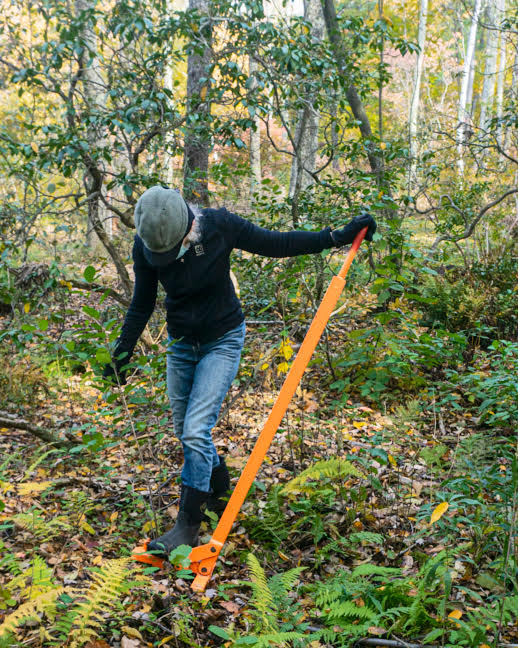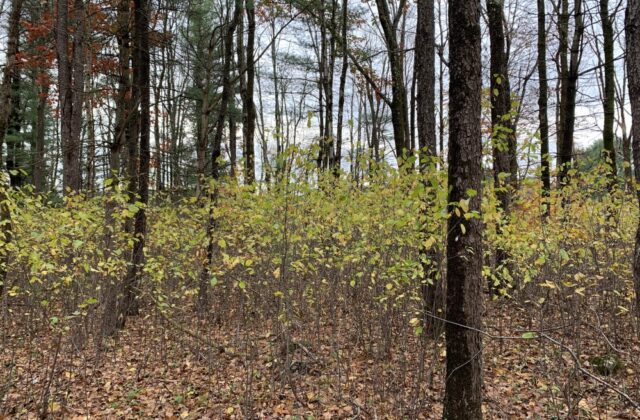Battling Buckthorn While Staying at Home
It’s Only Natural
By Susannah Wood

When the novel coronavirus dropped “normal” on its head, many Norfolkians found themselves spending much more time at home. People cleaned attics and garages, went through their closets, baked a lot of bread. Molly Ackerly and Mike Sconyers, very busy lawyers before March hit, knew just what to do with an extra hour in their day—grab their hand tools and attack some buckthorn. Glossy buckthorn (Frangula alnus), a small tree native to Europe and Asia, has made its way to North America, where it has become widespread in overgrown fields and forest edges, making, in some places, a wall of vegetation that dominates the understory.
While Ackerly and Sconyers have been removing multiflora rose and other invasives in their blueberry patch for many years, they hadn’t realized just how much the buckthorn had taken over in other areas of their property, including a recently acquired five-acre parcel of woodland. It often happens that an invasive species will be present in small numbers for years when suddenly the population explodes. Glossy buckthorn and its relative, common buckthorn (Rhamnus cathartica), not only crowd out other plants and disrupt the native ecosystem, Ackerly told me, but, for her, worst of all is that the berries are both attractive and toxic to birds, owing to the powerful laxative they contain. Smaller birds can even die from eating them. As she says, our birds are already in real trouble.

Ackerly and Sconyers hired local landscaper Phil Lovett to clear some of the wooded acres with a special forest mower that can work among the trees. They also got help from Christian Allyn, who specializes in invasive plant control and has an herbicide applicators license, but much of the grunt work they handled themselves, using an assortment of tools. They own a trio of weed wrenches, the biggest of which Ackerly has to hoist on to her shoulder to carry. Sconyers favors a venerable mattock with a curved handle handmade by Schuyler Thomson. Another essential is a battery-operated pruner from an orchardist supplier in Massachusetts. While weed wrenches are no longer manufactured, similar tools can be found online. (Sconyers and Ackerly recommend the Uprooter and the Puller Bear.)
To apply herbicide to cut stumps, they use a handy plastic bottle with a sponge tip, known as a Buckthorn Blaster. They mix in a blue dye to mark what has been treated. This method ensures that a small and very targeted amount of herbicide is used. Herbicides containing triclopyr, such as Brush-B-Gone, are effective on woody plants. While glyphosphate (found in Roundup and Rodeo and many other products) is also effective, many researchers in the United States and elsewhere warn of a link between certain cancers and endocrine damage from exposure to glyphosphate and urge the phasing out of its use. Nash Pradhan of Ginger Creek Nursery can give advice on organic herbicide treatments.
In the 30 years they’ve owned the blueberry fields, Ackerly and Sconyers have learned a lot about how best to handle invasive intruders. First of all, they know they are never home free. It requires regular attention to keep the situation under control. They’ve also learned what techniques and tools work best for different problems. Early on, one of their first targets was Japanese barberry. The best method for killing barberry plants too big to uproot turned out to be scorching the stems at the base of the shrub with a weed torch. For buckthorn they’ve discovered that removing the whole plant or cutting and spot treating with herbicide is most effective. If the main stem is only cut and not treated, the tree will send out many sprouts from the stump, making it much harder to pull up with a weed puller. Buckthorn spreads its seeds as the fruit falls or as birds eat the seeds and carry them elsewhere.
Ackerly says walking with her drives Sconyers a little crazy, as she is always stopping to pull out small buckthorn sprouts by hand. She’s hoping that in the open fields they are almost at the maintenance stage as opposed to full-scale eradication, but she’s ready for the long game. Both Sconyers and Ackerly look pretty fit and trim. Maybe invasive plant control is one antidote to all that homemade bread.

